 GraderGood
VS
GraderGood
VS
 GradeAssist
GradeAssist
GraderGood
GraderGood is an AI-powered platform designed to streamline the grading process for educators. It leverages advanced artificial intelligence to automate the assessment of student papers based on customized rubrics.
The system allows educators to upload their existing rubrics or create new ones using GraderGood's proprietary Rubric Wizard. This ensures the AI grades according to the educator's specific criteria and standards. The platform promotes grading consistency and reduces subjective bias. GraderGood is FERPA compliant, prioritizing student data privacy.
GradeAssist
GradeAssist is an artificial intelligence grading agent developed specifically for educators. It operates as a Chrome extension, integrating directly with common learning management systems (LMS) such as Google Classroom, Google Docs, Canvas, and D2L. This integration allows teachers to evaluate student essays within their established workflows using a single click, removing the need to upload, download, or switch between different applications.
The tool employs the teacher's customized rubric criteria to analyze student submissions, delivering personalized feedback, detailed annotations, and a comprehensive grade breakdown. GradeAssist aims to significantly reduce grading time for teachers, offering features like Smart Annotations based on the rubric, built-in Plagiarism Check, and AI Writing Detection to uphold academic integrity. It emphasizes objective assessment by relying exclusively on the teacher-provided criteria and grade level for evaluation.
Pricing
GraderGood Pricing
GraderGood offers Free Trial pricing with plans starting from $29 per month .
GradeAssist Pricing
GradeAssist offers Freemium pricing with plans starting from $13 per month .
Features
GraderGood
- Automated Grading: Save time and effort by automating the paper grading process.
- Custom Rubric Creation: Design rubrics that align with your specific grading criteria.
- Rubric Wizard: Customize various settings in your grading rubric.
- AI Grading Assistant: Utilize AI to assist with the grading.
- Grading Consistency: Ensure fair and standardized assessment across multiple papers and students.
- FERPA Compliance: Protects student privacy and complies with data protection regulations.
GradeAssist
- Smart Annotations: Analyzes text based on the teacher's rubric to pinpoint successes and areas for improvement.
- Grade Breakdown: Calculates a final grade estimate based on the rubric and provides a detailed breakdown.
- Playback Writing: Replays the student’s writing process to identify revisions, struggles, and potential AI use.
- Plagiarism Check: Built-in feature to promote academic integrity by checking for plagiarism and citations.
- AI Writing Detection: Integrated tool to help discern human-written vs. AI-generated text.
- LMS Integration: Works as a Chrome extension within Google Classroom, Docs, Canvas, and D2L.
- Custom Rubric Integration: Adapts grading based on the teacher's specific rubric criteria.
Use Cases
GraderGood Use Cases
- Grading English essays and History papers.
- Streamlining the assessment process for educators.
- Creating and customizing grading rubrics.
- Ensuring consistent and unbiased grading.
- Reducing grading time for educators.
- Experiment with various types of papers
GradeAssist Use Cases
- Grading student essays efficiently.
- Providing detailed, personalized feedback on writing assignments.
- Checking student work for plagiarism.
- Detecting the use of AI writing tools in student submissions.
- Analyzing student writing processes.
- Ensuring consistent grading based on rubrics.
- Saving time on grading for teachers.
FAQs
GraderGood FAQs
-
How does GraderGood work?
GraderGood uses AI technology to help professors and teachers grade papers. Once a rubric is provided, the AI analyzes the papers based on the given criteria, providing a quick and accurate assessment. -
Is GraderGood compatible with any rubric?
Yes, GraderGood is designed to be flexible and compatible with any rubric. Our AI Rubric creator assistant will walk you through the process of creating a custom rubric for each assignment, OR you can easily input a custom rubric you've created indepdendently into the system, and the AI will use it to evaluate the papers accordingly. -
What type of papers does GraderGood support?
Currently, GraderGood supports various types of English essays and History papers. We are working on adding functionality to be able to accurately grade research papers, and other academic documents. It is flexible enough to accommodate different subject areas and grading criteria, however. So if you would like to experiment with various types of papers, there is no harm in trying! -
How accurate is GraderGood?
GraderGood strives for high accuracy in grading papers. However, it's important to note that it provides an assessment based on the rubric provided. While the AI is designed to be precise, human review and judgment are still essential for the final grading decision. -
How does your platform ensure FERPA compliance?
GraderGood is committed to ensuring FERPA compliance and protecting student privacy. Our platform is designed to collect minimal student information, and we do not store any personal identifiers such as student names or ID numbers. This approach aligns with FERPA’s requirements for safeguarding student educational records. Additionally, we do not share any student information with third parties, further ensuring compliance with FERPA regulations.
GradeAssist FAQs
-
How is GradeAssist different from ChatGPT?
GradeAssist is specifically designed for essay grading with rubric integration, plagiarism/AI detection, and consistency. ChatGPT is a general-purpose chatbot that requires prompt tweaking, lacks integrated academic integrity features, and may provide less consistent feedback for grading purposes. -
How does GradeAssist know the grading criteria?
GradeAssist adapts to your unique rubric. You provide the criteria (specifically the level 4 section), and it analyzes student work based solely on that information, ensuring personalized and relevant grading. -
How accurate is the grade estimate provided by GradeAssist?
The grade estimates generated by GradeAssist are designed for precision and are typically within ±5% of the final grade assigned by the teacher. -
Doesn't using AI for grading introduce more bias?
GradeAssist aims to be objective by using only the criteria and grade level provided by the teacher. While acknowledging potential AI biases, the system undergoes rigorous testing, and the platform emphasizes that teachers remain in control of the final assessment. -
Will GradeAssist replace teachers?
No, GradeAssist is designed as a tool to enhance a teacher's ability to provide fair and efficient grading. It aims to support educators and reinforce their essential role, not replace them.
Uptime Monitor
Uptime Monitor
Average Uptime
99.83%
Average Response Time
502.47 ms
Last 30 Days
Uptime Monitor
Average Uptime
99.41%
Average Response Time
288.8 ms
Last 30 Days
GraderGood
GradeAssist
More Comparisons:
-
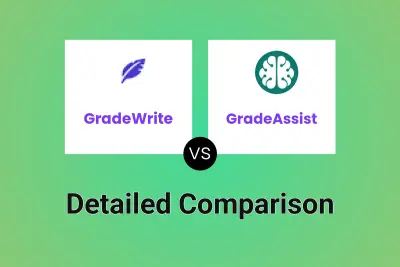
GradeWrite vs GradeAssist Detailed comparison features, price
ComparisonView details → -

EssayGrader vs GradeAssist Detailed comparison features, price
ComparisonView details → -
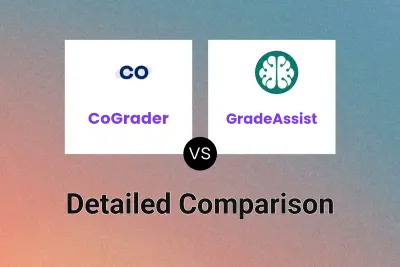
CoGrader vs GradeAssist Detailed comparison features, price
ComparisonView details → -

TimelyGrader vs GradeAssist Detailed comparison features, price
ComparisonView details → -

Scribblewise vs GradeAssist Detailed comparison features, price
ComparisonView details → -
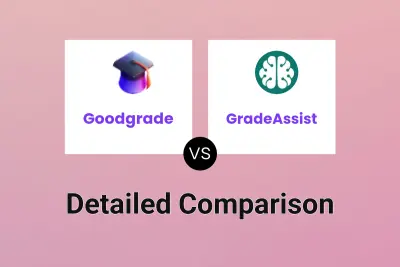
Goodgrade vs GradeAssist Detailed comparison features, price
ComparisonView details → -
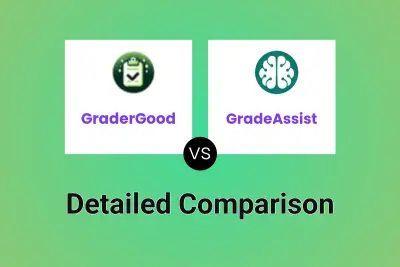
GraderGood vs GradeAssist Detailed comparison features, price
ComparisonView details → -
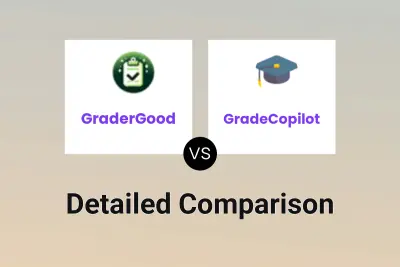
GraderGood vs GradeCopilot Detailed comparison features, price
ComparisonView details →
Didn't find tool you were looking for?